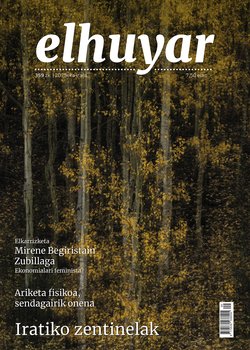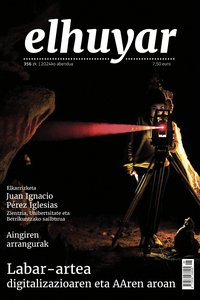Blood from the lab
Every time a bleeding episode occurs, it is common to quickly cover the wound and apply pressure to stop the bleeding. And this pressure helps to reduce the bleeding. But what really stops the bleeding is not the pressure, but the clotting of the blood.
One of the enzymes in blood, thrombin, is essential for blood clotting. The CIC biomaGUNE research centre has been able to grow this enzyme in the laboratory.
Accidents, operations, childbirth... many situations can cause bleeding, and if they are not cut off, life may be at risk.
To stop bleeding, a chain of chemical reactions that will cause clotting is set in motion. Blood clotting factors are activated until thrombin is produced, which is the enzyme essential for coagulation.
Thrombin causes the formation of fibrin in the final eye of the chain of reactions, the major component required for clot formation. He'll plug and stop the bleeding.
Valéry Pavlov; CIC biomaGUNE: Thrombin is an important factor in the blood that causes blood clotting. Without thrombin, it is impossible for blood to clot. The higher the concentration of thrombin in the blood, the faster the coagulation is. There is not a lot of thrombin in our blood because it would cause a risk of thrombosis. Nature chose to produce little thrombin in our blood, but in special cases, such as a wound and blood loss, it is very important to supply the wound with high concentrations of thrombin.
Currently, 90% of the thrombin used in hospitals is extracted from human or bovine blood.
Valéry Pavlov; CIC biomaGUNE: There are two widely used types of thrombin, human thrombin, which is obtained from human blood but can give viral problems, and bovine thrombin. Bovine thrombin does not contain human viruses, but it may contain other serious diseases, such as mad cow disease. In addition, bovine thrombin can have adverse health effects because it can cause an autoimmune reaction. When bovine thrombin is used, many people experience these problems and/or may develop an allergy to their own thrombin.
At CIC biomaGUNE they have developed a way to obtain this enzyme that has abandoned the side effects and adverse effects that thrombin can cause today.
Valéry Pavlov; CIC biomaGUNE: We have modified three bases in our gene, and now this gene does not have the characteristics of bovine thrombin and cannot in any way generate an autoimmune reaction. It can affect other factors in the blood to cause rapid clotting.
Laura Sáa; CIC biomaGUNE: We have started from a known thrombin gene, transformed it to produce improved thrombin and produce large quantities in the laboratory.
We have modified several amino acids to make the protein very stable and without risk to the patient, it can be used without washing.
Valéry Pavlov; CIC biomaGUNE: Our project is to produce thrombin in some bacteria that do not contain viruses dangerous to human health. We can grow very large amounts of these bacteria, and we can easily extract thrombin from these bacteria.At CIC biomaGUNE, harmless bacteria are used as culture medium. The modified thrombin gene sequence is inoculated into the bacteria. They have the ability to grow rapidly, so that in a short time a large amount of the desired protein would be produced.
The next step is to extract and wash this protein from the bacteria so that it can be used directly in the laboratory and finally in real life.
Laura Sáa; CIC biomaGUNE: It would apply this thrombin to the skin by means of gauze or ointment. It would be applied directly to the wound to form the thrombus as soon as possible and thus close the wound.
The next step in this CIC biomaGUNE project is the production of improved thrombin in yeast to facilitate the production process.
Such thrombin would be useful directly at the site of hemorrhage formation without other clotting factors, such as in cases of hemophilia where there is no clotting factor and clotting is very difficult.
Buletina
Bidali zure helbide elektronikoa eta jaso asteroko buletina zure sarrera-ontzian











